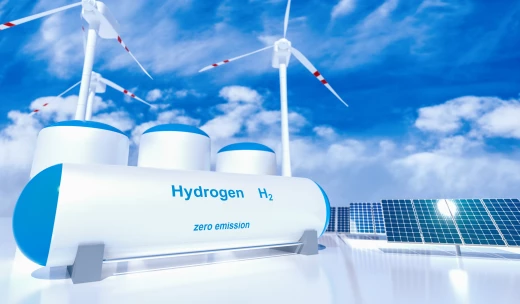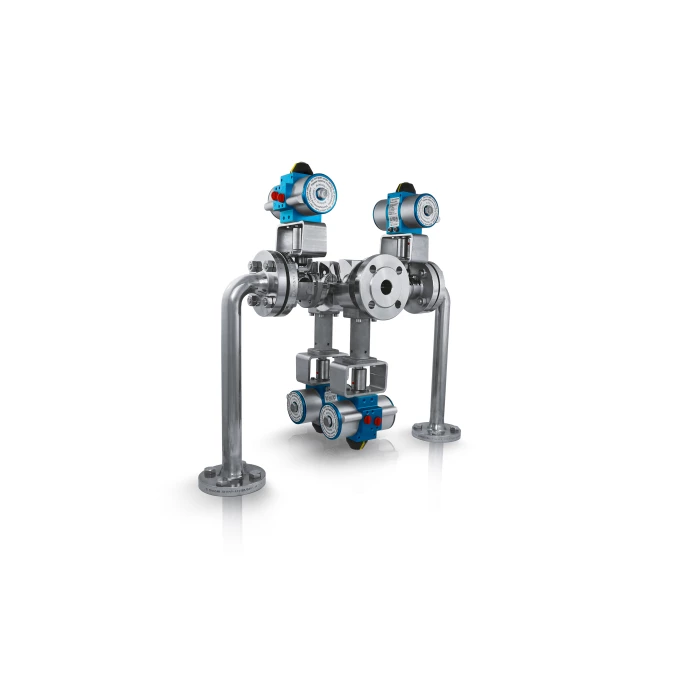
|
Rotterdam
KLINGER The NetherlandsNikkelstraat 2 3067 GR Rotterdam
Elsloo
KLINGER Service Center LimburgBusiness Park Stein 208A 6181 MB Elsloo
Velsen-Noord
KLINGER The NetherlandsRooswijkweg 200 1951 MD Velsen-Noord
Moordrecht
Hadro TechnologySouth Lane 351 2841 MD Moordrecht |

How to select the right valve for hydrogen applications?
Discover key trade-offs
Appropriate materials, sufficient leak tightness and other requirements.
As a clean and sustainable energy carrier, hydrogen can play a central role in the global energy transition. Hydrogen can help reduce emissions as well as our dependence on fossil fuels.
In the concept of Power-to-X, hydrogen forms the basis for the production of:
- various synthetic fuels
- chemicals
- materials such as ammonia, methanol and synthetic natural gas.
These products can be applied across various sectors, including transportation, industry, and heating. In short, hydrogen presents significant potential and opportunities for decarbonization. The Earth's temperature has risen by 1.1 degrees Celsius compared to the end of the 19th century, and temperatures continue to climb. The UN Climate Change Agreement aims to limit global warming to no more than 1.5 degrees Celsius. To achieve this target, emissions must be reduced by 45 percent by 2030, and global climate neutrality must be achieved by 2050.With the following tips, you will be well prepared to select the right valve for hydrogen applications.
Suitable materials
First, it is important to be well informed about the different materials and manufacturing processes for valves. It is essential to choose a material that is compatible with hydrogen. That way you can avoid complications such as metal embrittlement, increased pressure and internal stress. "We recommend valves made of Austenitic steels, such as 316/316L, because this material is compatible and recognized by the VDMA (German Technical Federation)," states Marcel Grossman, manager of business development at KLINGER Schöneberg. He continues: "In addition to the base material of the valves, it is essential that non-metallic components are also compatible; this also applies to the sealing material and lubricants." Choosing the right materials ensures reliability, durability and process safety. Machining valve pins is also crucial. This prevents hydrogen embrittlement. This involves machining all surfaces in contact with the application. It also involves welding to prevent nicks and residual stresses due to local softening.

"In addition to the base material of the valve, it is essential that non-metallic components are also compatible;
that also applies to the sealing material and lubricants."
- Marcel Grossman, manager Business Development at KLINGER Schöneberg Germany -
Leak prevention and testing
Because of the small and light molecular composition of hydrogen, leakage prevention is also very important. A leak-free valve is essential for maintaining safety and efficiency in your production. When testing valves, we recommend using nitrogen or helium because they provide reliable and reproducible results. It also gets you around safety and cost issues associated with using hydrogen. These tests are also used to test the tightness of seals for hydrogen applications.
Occasionally, you may encounter external leak tightness determinations that exceed standard determinations. This may require changes to the valve design. It is critical to consider whether these changes provide additional benefits over the mandatory safety measures implemented in the particular application
Navigating standards, processes and applications
There is no one-size-fits-all valve for hydrogen use. Therefore, it is very important to know all the specific requirements for each application. Despite more and more standardization in the field of hydrogen as an energy carrier, it is useful to be aware of specific requirements. Based on that, you can make a good decision.
Conventional hydrogen applications include:
- refining petroleum
- heat-treating metals
- fertilizer production
- food processing
- and reducing the sulfur content in fuels.
These applications have different requirements compared to newer applications, where gas storage under high pressure and extremely low temperatures is a requirement. KLINGER Fluid Control and KLINGER Schöneberg have a wealth of experience in supplying valves for a wide range of hydrogen applications. Engineers can rely on them in the development of modern hydrogen plants, including electrolyzers, storage systems and pipeline networks.
In hydrogen applications, therefore, there is no one valve you can use for all processes. "Standardization in hydrogen storage lags behind the rapidly developing market. Although numerous working groups have been established to formalize and document new requirements, getting these standards finalized often takes months or even years ", states Ivar Madsen, Managing Director of KLINGER Denmark. Given the current high demand, both users and suppliers are actively looking for applicable guidelines.

"Standardization in hydrogen storage lags behind the rapidly developing market. Although numerous working groups have been established to formalize and document new requirements, getting these standards finalized often takes months or even years."
- Ivar Madsen, Managing Director of KLINGER Denmark -
In hydrogen applications, there is therefore no single valve that you can use across all processes.
Given the current high demand, both users and suppliers are actively seeking applicable guidelines.

Important aspects for valve selection
The huge range of valves and manufacturers can be overwhelming. The following aspects can provide guidance:
- stage of the hydrogen process
- blue, gray or green hydrogen
- material of the body, stuffing box, ball and sealing elements necessary
- maximum pressure
- temperature range
In addition, all kinds of unique challenges may require special valve designs. KLINGER Fluid Control's solution is to use special double block-and-bleed valves with a bleed that provide double sealing and drainage of the dead and spherical interior. This design allows you to perform tightness checks at the ball valve passage while the system is in operation. This increases safety and efficiency. The Duoball valve, designed by KLINGER Schöneberg, features a double ball configuration in a single body, allowing for double block and independent shutoff. This innovative design potentially provides a fourfold increase in safety compared to conventional ball valves.
Addressing challenges and misconceptions
The rapid development of the hydrogen market has resulted in uncertainty among manufacturers and regulators regarding proper selection, material options, testing procedures and industry standards. There is growing support for green hydrogen production and its use is increasing. As a result, the challenges are also increasing. To address these challenges and eliminate confusion, organizations such as the VDMA have issued position papers with recommendations on material selection, industry standards, pressure and leak testing. Adhering to these guidelines can help make informed valve selection decisions tailored to your specific hydrogen applications.
Collaborating with experienced valve manufacturers.
"Selecting the right valve for hydrogen applications requires in-depth knowledge of compatible materials, leakage prevention and specific application requirements," Gerhard Gruber, Application Engineer at KLINGER Fluid Control reiterates. He recommends actively following developments in hydrogen technology. He also recommends following the guidelines of organizations such as the VDMA and cooperating with experienced valve manufacturers. As the hydrogen market develops, the requirements and standards for valves also change.

"Selecting the right valve for hydrogen applications requires in-depth knowledge of compatible materials, leakage prevention and specific application requirements,"
- Gerhard Gruber, Application Engineer at KLINGER Fluid Control Austria -.
Frequently asked questions (FAQ)
I have a specific question
For more information about our products and services for hydrogen applications in the Netherlands, please contact:
